The technical requirements for establishment of Pearl farm and its successful operation are briefly described below:
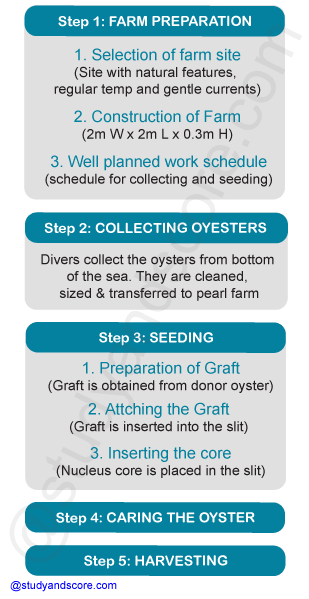
The process of pearl culture includes the follwing steps which are very crucial for obtaining high grade of pearls with good commercial value.
Step 1: Construction of pearl farm
Construction of a pearl farm includes three steps. They are,
Selection of farm site: This step determines the type of pearls produced, and the oyster survival rate. Some of the points to be noted while selecting the site are:
* Natural features like mountains and reefs are needed to protect the farm from winds, currents, storms, etc.
* Constant regularity of temperature
* Type of sea bed, such as rocky or sandy.
* Gentle currents are essential for the survival of the oysters as they bring food and oxygen.
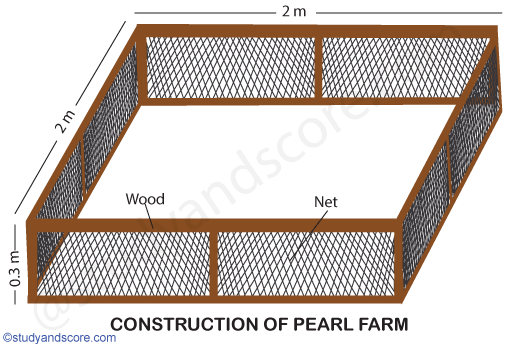
Construction of pearl farm: The whole pearl farm system is based on series of floating wooden rafts. Ten units of wooden rafts are used. Each raft consists of two to five pieces of wood making the total length to 20 ft. The raft is covered with wire mesh baskets, each of which house 10 oysters.
Well-planned work schedule: A typical work schedule plays a very critical role in pearl culture. The timing for collecting and seeding the oysters must be scheduled and followed strictly.
Step 2: Collecting oysters
After the construction of pearl farm, the divers set out to the bottom of the sea, to collect the oysters. Divers are pulled by large lugger boats in the direction of the tidal flow. Oysters are generally located on a flat rock bottom and are usually covered with marine animals and a thin layer of silt. Therefore, it is often very difficult for divers to recognise them. The shells collected, are cleaned, sized, and placed into baskets for storage until they are transferred to the pearl farm.
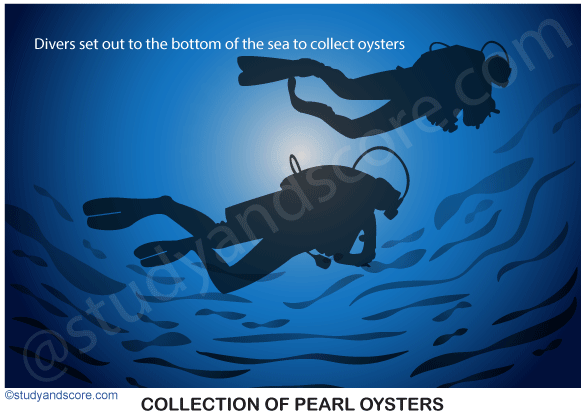
Step 3: Seeding
Two-three year old healthy oysters are considered for surgical implantation known as seeding. This is a very delicate operation and involves three stages:
Preparation of the graft: A donor oyster is sacrificed to obtain mantle. Mantle is needed by the host oyster to accept the nucleus. The mantle is located on the outer section of the oyster and Mantle produces the nacre which forms pearl. Before a graft is taken from the mantle, the oysters are starved for several days to slow down the metabolism of the oyster. This helps to decrease the risk of core rejection and open the oyster easily.
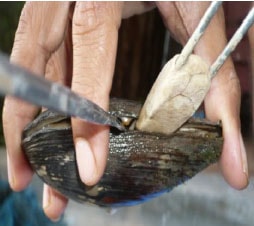
Attaching the graft: The oyster is opened with special wedges and pliers, then a scalpel slit is made in the soft tissue near the reproductive organ and a graft of living mantle is inserted into the slit.
Inserting the core: A nucleus is placed in the scalpel slit and the oyster is then returned back to the water. The inserted core irritates the oyster, provoking it to gradually coat the core with thin layers of mother of pearl nacre. After some time, the oysters are collected, and x-rayed to see whether the implants have been accepted. Oysters which have rejected the implant are returned to the water and are once again operated. The oysters which have accepted the implant are transferred to the pearl farm.
The person who is seeding must be extremely careful not to harm the tiny pea-crab which lives unharmed within every healthy oyster. It is presumed that the crab assists the oyster by keeping it clean and by sharing the debris which the oyster sucks in.
Step 4: Caring the oyster
The shells which have been collected and transferred to the pearl farm are placed in baskets or panels which are attached to long lines connected to the floating rafts. The rafts are dropped down into the ocean with the oyster securely inside the basket, where they remain until they become operated on for further seeding.
The oyster can produce more than one pearl in its lifetime. Regular cleaning of the shells to remove seaweed results in better pearls plus makes them easier to handle. The cleaning is done by a machine which uses water jets and brushes to clean off any seaweed. The oysters need very tender loving care so as to be productive when harvested.
Harvesting
After 2-3 years, the oysters are harvested. It is necessary to make a trial harvest to determine whether the pearls have a sufficient coating. If it is not sufficient then an additional six months to a year of culturing is necessary. The oysters are split open and pearl bags are cut by the scalpel to remove the pearls. Collected pearls should be thoroughly dried after the harvest to prevent loss of luster.
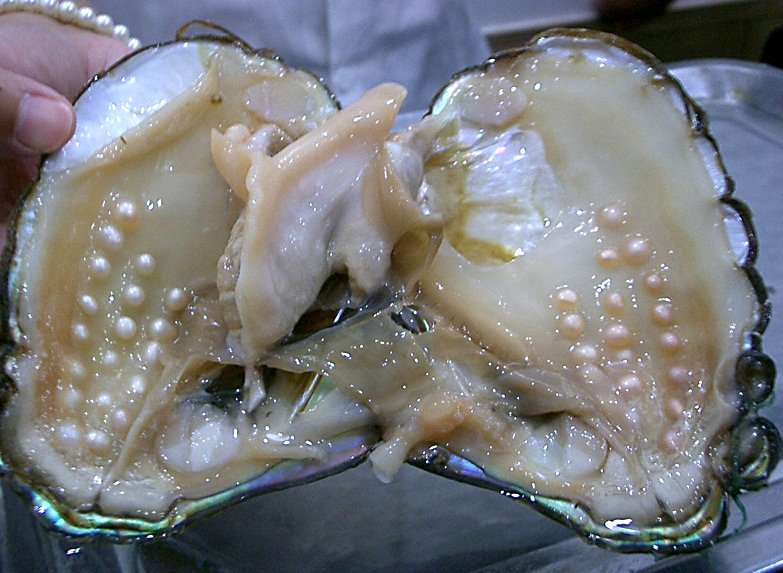
Sorting pearls
There are many different steps involved with the sorting of pearls. Firstly, the pearls are sorted according to whether they can be used for the cultured pearl industry or not.
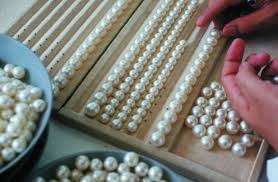
These are categorised into three sections:

- Share with your friends! -
Login to post your comment here...
- or with social Account -